How To Go Plant-based For Beginners (with a Nutritionist)
- Emma Lisa

- Mar 21, 2024
- 14 min read
Updated: Nov 2
If simply love the idea of better, wholefood nutrition from a more plant-based diet, eating more plants is a fabulously healthy way to lose unwanted kilos and deeply nourish your body. As a Nutritionist who is primarily plant-based herself, today I'm sharing how to go plant-based for beginners who want to eat better, reduce meat intake, and balance their body weight with plant power. Grab a green-tea lemon water and let's get into it!

Plant-based for beginners isn't as complicated or hard as you might think. In fact, there are many approaches to eating more plant-based foods that are simple to adopt and can become part of your usual diet. Today, I am sharing all the benefits of plant-based, how you can ease into this style of eating for beginners that is a manageable, step by step approach. Napkins ready!
FIND PLANT-BASED MEALS: Browse Recipes →
Going Plant-based For Beginners
Plant-based, for me as Nutritionist, is all about teaching people how to eat from a flexible eating plan that simply focuses on making healthy meals mostly based on raw and fresh plant food ingredients. This process does not need to be compilated or involve a crazy lifestyle change, total pantry overhaul, or racing to the grocer for a massive all vegan shop. Instead, we'll keep it simple, and focus on progress each day adding in and consuming more veggies than processed foods, more plant protein than animal sources. Think of it as crowding out the processed and meat products for more veggies, fruits and vegan ingredients, recipes and meals. Sounds doable right? And it is!
What Are The Benefits Of Going Plant-based?
Oh, let me count the ways! The benefits of a more diverse and plant-based diet is huge. Plants are an excellent power-house of essential nutrients, including vitamins, minerals, and vital macros like protein and dietary fibre. Eating more plants can help you maintain a healthy weight balance long term, and significantly reduce your risk of chronic diseases such as heart disease, diabetes, and some types of cancers. A plant-based diet also reduces trauma and harm to our animal friends, if that is something you are passionate about. I know it's something I feel good about practising.
Getting Started With Plant-based Eating
Diving into a more plant-based diet is easy; you don't even have to go all in right away to reap the benefits. Even small, daily modifications can make a big difference in how you look and feel, and in a short amount of time. Here are a few pointers to get you started:
begin by purposefully adding more plant-based meals into your weekly menu
experiment with various vegetables, fruits, legumes, and whole grain to find what you like
swap ingredients such as almond milk instead of dairy milk, tofu or tempeh for meat
join my Meatless Mondays or create your own meat-free day with plant-based meals
bit by bit replace your pantry items once they run out with more plant-based items
make meal prepping a habit, you'll always have healthy plant-based meals on hand
find a plant-based support group or online community for inspiration and motivation
don't be shy to experiment when it comes to plant-based meal planning and cuisine
Transitioning to a more healthy diet, one rich in plant-based foods can be a fun experience if you look at it as a self-challenge or long term weight loss approach. You can go in as slow and gentle as you like, or dive head first and with both feet. The secret to success is sticking with it, making changes you can and will maintain long term, and of course, having fun with it all!
RELATED:
You Might Like
The Well-Balanced Plate
Plant-based Ingredients & Macros
When I coach people transitioning to a plant-based diet, their first question is always about macros and non-animal food choices. This concern makes perfect sense, meat, eggs, and seafood deliver complete proteins with all essential amino acids in one convenient package while plant-based foods require more of a strategy. Eating vegetarian or vegan means you need to diversify your protein intake and learn about complementary proteins. This means strategically combining different plant foods to create complete amino acid profiles that are always found in animal proteins.
Why Food Combining Matters
Animal proteins are "complete," containing all nine essential amino acids your body can't produce on its own. Most plant proteins are "incomplete," meaning they are missing one or more essential amino acids. When you combine certain plant foods, you can create that same complete amino acid chain. You don't even have to consume them all in one meal. Your body actually pools amino acids throughout the day, so you don't need complete combinations at breakfast, lunch and dinner. You just need to focus your plate on a wide variety across your daily intake.
Simple Food Combining Strategies
Here's a few examples of how food combining works for the plant-based diet. It's really quite simple, once you master a few basic principles, promise. For example, quinoa, buckwheat, and hemp seeds are naturally complete proteins and need no further combining. Soy products (tofu, tempeh, edamame) are also complete proteins. You want to aim for 20-30g protein per meal by layering multiple protein-rich ingredients to fill your plate. Don't overthink this, just keep combos like these (below) in mind as your staple "complete protein" source for main meals and side dishes:
beans + grains: black beans and brown rice, lentils and quinoa, chickpeas and whole wheat pasta
grains + nuts/seeds: oatmeal with almonds, whole grain bread with nut butter, flax on cereal
legumes + grains: split pea soup with barley, chickpea curry and brown rice, lentil stew with whole wheat bread
nuts/seeds + legumes: hummus (tahini + chickpeas), peanut butter with soy milk
As you can see, the foods that make up plant-based protein often pair really well together. The beauty of this approach is that you'll be eating more diverse, flavourful meals while meeting all your nutritional needs. Your taste buds and your body are going to thank you for this variety.
Plant-based Food List Guide
Stocking The Plant-based Pantry
Before I share a few plant-based recipe ideas to try, let's go through a list of plant sourced food items to help you restock your pantry with more vegetarian and vegan foods. Choose a from this list (you may already have them in your kitchen) and experiment with a few new meals this week.
Legumes
Beans and lentils are an excellent plant-based protein and carbohydrate. Adding them to your plant-based plate provides sustenance and a balance of satiating protein. To reduce the natural gas caused by eating lots of beans and lentils, I recommend soaking canned beans or lentils before eating them, and give them a thorough rinse a few times. You can also try sprouted beans, lentils and peas for extra nutrition. Here's few ideas to start with...
beans: black beans, kidney, pinto, white beans, cannellini, chickpeas, adzuki, or lime beans
lentils: green lentils, black, brown, green, or red lentils
peas: green peas, split peas, yellow peas
soybeans & soy products: non-GMO soybeans, edamame, tofu, tempeh, or Miso
others: fava bean, lack-eyed peas, mung beans or bean
Legumes not only provide delicious plant protein, but they also offer essential nutrients like dietary fibre, vitamins, and minerals. Including a variety of legumes in your diet is an great way to balance your plate with wholefood protein from non-animal sources.
What To Shop For: most beans and peas are found canned and dry form, with the except of sprouts, fresh peas and green beans. Look for beans and peas that are "low in sodium" or have "no salt added", so be sure to read those nutrition labels. Whether you buy canned or dry are both, remember to soak or rinse them well!
Legume Salad Favourites To Try
SPONSORED ADVERTISEMENT
Nuts & Seeds
Don't overlook nuts and seeds. These are both nutrient-dense additions to the plant-based diet, providing essential fats, protein, fibre, vitamins, and minerals. You can choose to consume them dried, activated or even as as micro-green sprouts. Here's some great additions to add to your vegan salad bowls, over veggie stir fry, and in your baking.
Nuts
almonds: a rich in vitamin E, magnesium, and healthy fats, excellent as a snack
Brazil nuts: a great source of selenium, an essential mineral; eat in moderation
cashews: deliciously creamy nuts that add a buttery texture to dishes
hazelnuts: nutty and versatile, often used in desserts and spreads
pecans: sweet and crunchy, good fibre source and great in salads and desserts
pistachios: lower in calories and high in protein, add to salads, oatmeal and desserts
macadamia nuts: butter-like nuts with a smooth texture, eat in moderation
walnuts: high in omega-3 fatty acids and antioxidants, great for topping desserts
Seeds
chia seeds: packed with omega-3 fatty acids, fibre, and protein (see recipes)
flaxseeds: high in fibre and omega-3s, often ground for better absorption
hemp seeds: excellent source of plantbased protein and omega-3s
poppy seeds: tiny seeds used in baking and cooking
pumpkin seeds (pepitas): a good source of iron, magnesium, and zinc.
sesame seeds: tiny seeds rich in calcium and healthy fats
sunflower seeds: nutrient-rich seeds with a mild flavour
Adding a variety of nuts and seeds into your plant-based meals adds texture, flavour, and a nutritional boost. They go great in meals like snacks, smoothies, and main meals.
What To Shop For: when buying whole nuts, choose raw with the skin on or roasted. Avoid those that have been processed in any way to remove the skin, salted or enhanced with flavourings. When choosing a nut butter, be sure to look for simple ingredients; just the nut or seed, and salt (optional). Avoid any and all nut or seed butters that contain added sugar, thickeners or palm oil.
Healthy Whole-Grains
Whole grains are such a staple in the well-balanced plant-based diet, providing dietary fibre, essential nutrients, and a satisfying base for many dishes. Here's my top pick of healthy plant-based whole grains to experiment with in your meals. You only need a little such as 3 tbsp to 1/2cup, so use sparingly. If you are gluten-free (like myself), look for (GF) to see if it is safe for you.
barley: a chewy grain that adds texture and added fibre to any salad
brown Rice (GF): a staple that works well as a high fibre base for salad bowls
buckwheat (GF): despite its name, it's gluten-free and works great in salad bowls
bulgur: precooked and quick to prepare, ideal for salads
farro: a nutty and chewy grain often used in salads; high in fibre
freekeh: roasted green wheat, offering a smoky flavour for various your salads
hulled millet (GF): a nutrient-dense, gluten-free grain perfect for a variety of uses
quinoa (GF): a complete protein, rich in fibre and versatile for various dishes
wild rice (GF): nutty and aromatic, perfect in your salad bowl
What Shop For: most whole-grains are found in the sauces and pasta aisle, or the baking aisle. You may also find a few options in the health food sections of the grocery store. Many lifestyle and health food shops stock a wide variety of different grains you can browse. Below are some of the types I regularly use in my recipes.
High-fibre Salad Grains
SPONSORED ADVERTISEMENT
Meat Alternatives
Plant-based isn't just about feasting on fresh vegetables and fruits, as we already discussed, you also need to round out your meals with a good balance of plant proteins. This will help to regulate your blood sugar levels, better support your weight loss and help you see results. Try these meat-free alternatives and suggestions:
brown rice & peas: combine a 50/50 serving together to create a complete protein
chia seeds: beyond being high in omega-3 fatty acids, chia seeds are a protein boost
edamame: young soybeans are not only delicious but also high in protein
green peas: peas are an excellent plant protein source and also high in fibre
legumes: beans, lentils, and chickpeas are very good sources of protein
lentils: red, green, or brown, lentils are protein and dietary fibre powerhouses
protein powder: choose hemp, soy, or a brown rice/pea combination for protein
nuts & seeds: almonds, peanuts, chia seeds, and hemp seeds are protein-rich choices
quinoa: a complete protein grain, rich in essential amino acids and dietary fibre
seitan: made from wheat gluten, seitan is a concentrated vegan protein source
tofu & tempeh: non-GMO soy products are vegan, versatile and protein-packed
veggie burgers or nut loaves: made with high protein ingredients like beans and lentils
What To Shop For: plant-based meat alternatives are typically lower in saturated fat compared to animal proteins, especially red meat. They're also an easy way to get a large dose of protein on a budget compared to meat products. Look for fresh, canned or dry protein options, and avoid those pre-made vegan products that claim high protein.
RELATED:
You Might Like
Beginner Plant-based Recipes To Try
Quick & Easy Meal Ideas
BREAKFAST IDEAS:
Kiwi Banana Breakfast Bowl
Meal Prep: 2-3 minutes
This High Protein, Banana Kiwi Breakfast Bowl Recipe makes such a quick brekkie, a deliciously sweet dessert on a hot summer's day, or in smaller portions, a great high-protein afternoon snack. All you need to do is swap the Greek yoghurt in the recipe for a soy, cashew or coconut yoghurt. It only takes a few minutes to prepare it, and it is super nourishing.
Green Goddess Smoothie Recipe
Meal Prep: 2-3 minutes
So fast for those crazy busy mornings, protein-rich vegan smoothies are a staple in my diet. To make a filling green smoothie using only plant-based ingredients combine your choice of plant milk, and a generous handful of greens like arugula, beetroot leaves, spinach, kale, or watercress in a blender. Add a little extra fibre with a tablespoon of chia seeds or scoop of psyllium husk, 30g of your favourite vegan protein powder, and 1-2 fruits like pineapple or mango. Blend with ice for that thick, soft-serve consistency and feel like you're having dessert for breakfast.
Chia Breakfast Pudding
Meal Prep: 2-3 minutes
One of the best micro meal prep hacks is to prepare breakfast while you’re cooking dinner. Chia pudding is an excellent choice for this, and makes a versatile, nutrient-dense breakfast for at home or on the go that requires just a few minutes to prepare. While you’re waiting for dinner to cook, whisk a few tablespoons of dry chia seeds with almond milk, vanilla extract, and a sweetener of your choice. Pour this mixture into small mason jars and let them sit overnight in the fridge to set. In the morning you’ll have a healthy breakfast ready to top with in-season fresh fruits, nut butter, or granola. Browse recipes, here.
Vegan Egg-free, Dairy-free Pancakes
Meal Prep: 10-12 minutes
Protein pancakes are another great breakfast or brunch recipe that you can make fully vegan. This recipe provides an alternative to those sugary, overly processed store-bought mixes and perfect if you are gluten-free and celiac like myself. The recipe relies on mashed banana, egg substitute and vegan protein powder instead of flour to make a delicious, wholefood-based batter. Blend, pour and pan fry for the fluffiest pancakes. See the full recipe, here.
LUNCH & DINNER IDEAS
Vegan Buddha Bowls
Meal Prep: 10-12 minutes
The vegan buddha bowl recipe is such a simple way to make with a filling plant-based meal for work lunches or a meal-prepped dinner. To make, use up whatever fresh or cooked veggies you have on hand. I love experimenting with this almost vegan recipe and using swapping the prawns for plant protein like tempeh or tofu. Combine a base of cooked grain such as brown rice or quinoa, and then top with greens, chopped veggies, nuts, seeds, and a drizzle of your favourite homemade dressing.
Chickpea Spinach & Cashew Feta Salad
Meal Prep: 3-5 minutes
Salads are always an easy vegan or vegetarian meal to make. This one will take you less than 5 minutes to put together and is a well-balanced source of plant protein. To make, add a large handful of spinach to a serving bowl, top with a few tablespoons of rinsed chickpeas and a little crumbled cashew fetta cheese over the top. It's tasty enough as is, but you love salad with dressing, try it with a homemade, creamy avocado salad dressing made from smashed avocado, garlic, oil and vinegar.
Summer Rice Paper Rolls
Meal Prep: 15 minutes
If you don't mind playing with your food, this recipe is fun and so nutritious to make. All you need is rice paper sheets and a collection of your favourite vegetables. Chop everything up into thin, long strips and season some tofu or tempeh for protein. Lay a little of each in a pre-soaked rice paper sheet, roll and enjoy.
Vegan Brown Rice Sushi Rolls
Meal Prep: 10-12minutes
These days its easy to make sushi at home with a kit and your favourite filling. To make these vegan rolls all you need is cooked brown rice, seasoned tofu cut into strips, thinly sliced yellow capsicums, leaf lettuce, seaweed paper and a drizzle of sriracha mayo. Stuff and enjoy as vegan lunch or dinner.
Nutritionist's Note
Adding more plants to your meals is one of the simplest ways to boost your overall fibre and nutritional intake for very little effort. Plant-based foods are always naturally rich in essential vitamins and minerals, all of which support healthy digestion, natural body weight balance, and long-term health. Remember, variety is key. Aim to consume a wide and constantly varying range of brightly, colourful vegetables, fruits, legumes, and whole grains into your meals to ensure you’re covering all the bases. Bon appetite!
Frequently Asked Questions
Do I have to go completely vegan?
Definitely not. You can go all in or ease into a more plant-based diet. There really is no right or wrong. “Plant-based” simply means the majority of your meals come from plant sources and ingredients. If you choose, you can still include your favourite animal products. This is especially helpful while transitioning and makes going plant-based more flexible and easier to sustain. The 7-day plan above is a gentle introduction, and not an all-or-nothing challenge. Do what works for you.
Will I get enough protein?
Yes, of course, you just need plan well-balanced meals with a variety of protein-rich ingredients. Beans, lentils, tofu, tempeh, quinoa, nuts, seeds and whole grains are all naturally rich in protein. Eat from a rotating combination of these throughout the day to ensure you’re getting all the essential amino acids.
Will I feel tired without meat?
Not necessarily, although some people may notice a dip in their energy at first while their body adjusts. This usually passes within a few days as your body adjusts. It really just comes down to what your diet and health was like before you started to eat fully plant-based. The key to feeling your best on a plant-based diet to hydrate well and eat plenty of iron-rich plant foods like lentils, spinach, pumpkin seeds, and fortified cereals. Pair these with vitamin C-rich foods in the same meal to boost absorption.
Do I need to take supplements to go plant-based?
For short-term vegan challenges like this one, most people don’t need to bother with supplements. However, if you do decide to go fully plant-based, I highly recommend getting your bloods done before you start. Have your GP or naturopath do a full panel and help assess whether you have any nutritional deficiencies before you start,. Then have them reassess again in six months time. For those with vitamin absorption issues or anaemia like myself, you can consider supplementing with essential nutrients such as vitamin B12, ferrum (iron), vitamin D, and possibly omega-3 (from algae oil). It’s always best to check with your treating healthcare provider for what will work for you. If you are worried, you might find this post helpful, How To Get Enough Iron & B Vitamins On Plant-Based Diet.
Nutritionist's Note
Whenever you are increase the fibre in your diet, such as by eating more plant-based foods, it is important to increase your water intake as well. To help clients make water more palatable, I suggest adding fruit like blueberries, cucumbers, strawberries, limes or orange slices into your water bottle. When you are done drinking, you enjoy a healthy fruit or vegetable snack. If you'd like to see what a difference hydration makes, come join my Membership Group and consider joining my free Easy Meat-Free Monday Recipe Challenge (By A Nutritionist). I'll guide you every step of the way!
Healthy + happiness,
Emma Lisa xx
HEALTH & NUTRITION PRACTITIONER








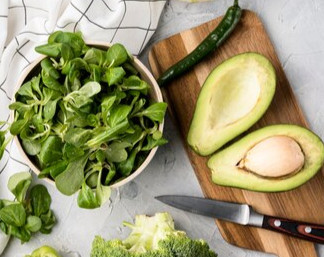



























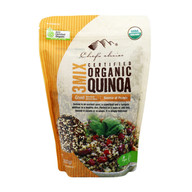

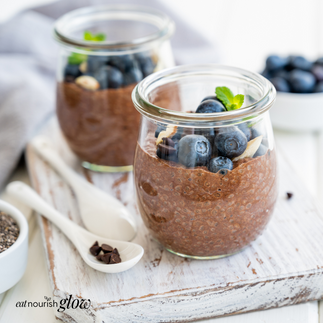









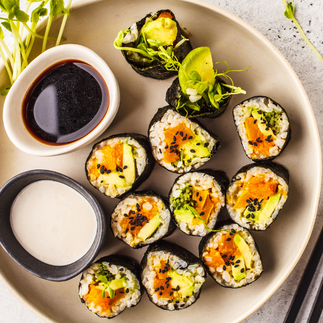
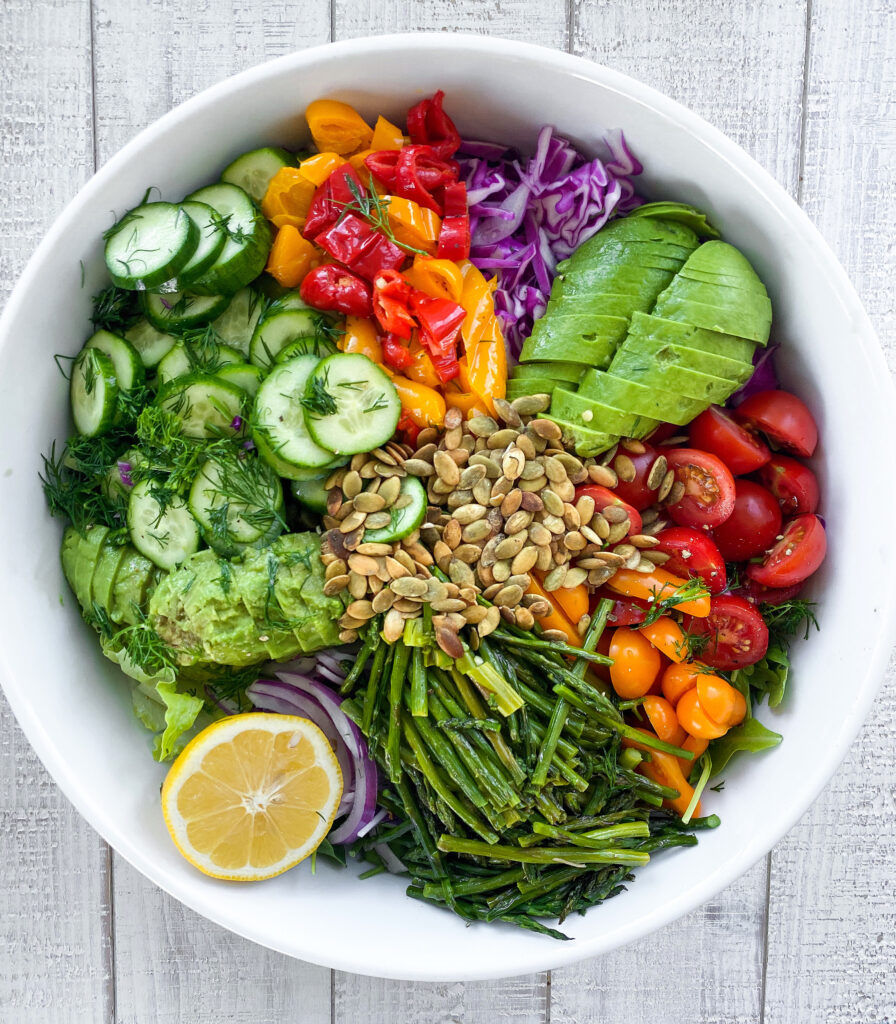


























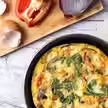



Comments